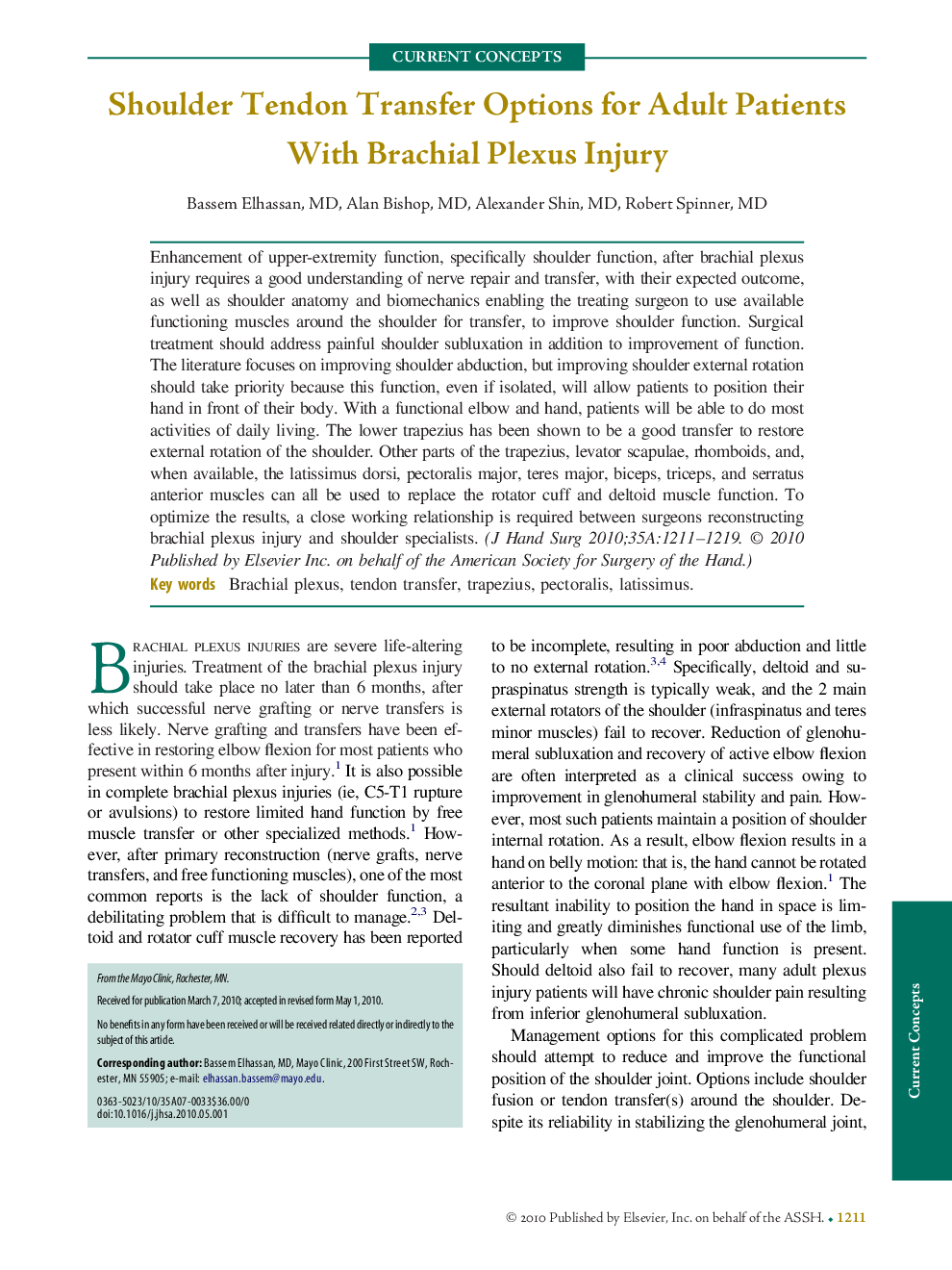| Article ID | Journal | Published Year | Pages | File Type |
|---|---|---|---|---|
| 4070259 | The Journal of Hand Surgery | 2010 | 9 Pages |
Enhancement of upper-extremity function, specifically shoulder function, after brachial plexus injury requires a good understanding of nerve repair and transfer, with their expected outcome, as well as shoulder anatomy and biomechanics enabling the treating surgeon to use available functioning muscles around the shoulder for transfer, to improve shoulder function. Surgical treatment should address painful shoulder subluxation in addition to improvement of function. The literature focuses on improving shoulder abduction, but improving shoulder external rotation should take priority because this function, even if isolated, will allow patients to position their hand in front of their body. With a functional elbow and hand, patients will be able to do most activities of daily living. The lower trapezius has been shown to be a good transfer to restore external rotation of the shoulder. Other parts of the trapezius, levator scapulae, rhomboids, and, when available, the latissimus dorsi, pectoralis major, teres major, biceps, triceps, and serratus anterior muscles can all be used to replace the rotator cuff and deltoid muscle function. To optimize the results, a close working relationship is required between surgeons reconstructing brachial plexus injury and shoulder specialists.
